Refined Analysis of the Transient Temperature Effect during the Closing Process of a Cross-Sea Bridge
Abstract
:1. Introduction
2. Project Introduction
2.1. Project Overview
2.2. Meteorological Conditions
2.3. Closure Process
3. Analysis Theory of Transient Temperature Field
3.1. Unified Heat Flux Partial Differential Equation
- is the temperature at any point in the cross section of the steel box girder;
- is the Cartesian coordinate system of the bridge cross section, which are indicated in Figure 4;
- is the time;
- is the material density;
- is the specific heat capacity;
- is the thermal conductivity;
- is the initial temperature (minimum temperature) during the construction of the bridge structure.
3.2. Solution of Partial Differential Equations
3.2.1. Initial Temperature
3.2.2. Heat Conduction Boundary Conditions
- is the solar radiation heat flow density, the calculation formula is ;
- is the solar radiation absorption coefficient of steel;
- is the solar radiation intensity, and its value is equal to the sum of the solar direct radiation intensity and scattering intensity;
- is the comprehensive heat transfer coefficient;
- is the external surface temperature of the steel box girder;
- is the air temperature around the steel box girder.
- is the equivalent comprehensive temperature of the external surface of the steel box girder, and the calculation formula is .
3.2.3. Solar Radiation Intensity
- is the direct sunlight intensity;
- is the sunlight scattering intensity.
- is the normal solar radiation intensity;
- is the angle of incidence of solar rays;
- is the solar constant;
- is the atmospheric transparency coefficient;
- is the solar altitude angle;
- is the date serial number;
- is the latitude at the bridge site;
- is the declination of the sun;
- is the solar hour angle;
- is the azimuth of the inclined plane.
3.2.4. Equivalent Comprehensive Temperature
- is the atmospheric convection heat transfer coefficient, the calculation formula is ;
- is the wind speed at any time [24];
- is the solar radiation heat transfer coefficient, and the calculation formula is: ;
- and are constants, where T is the absolute temperature (Kelvin scale);
- is the radiance.
3.2.5. Fitting of Atmospheric Temperature
- is the atmospheric temperature around the steel box girder;
- refers to the daily average temperature, and its value is ( + )/2;
- refers to the daily temperature change amplitude, and its value is ( − )/2;
- refers to the daily maximum temperature;
- refers to daily minimum temperature.
4. Numerical Analysis of Transient Temperature Effect
4.1. Transient Temperature Gradient Analysis
4.2. Refined Analysis of Transient Temperature Effect
4.2.1. Closure Length and Beam End Corner
4.2.2. Bridge Alignment after Closure
4.3. Discussion on Optimal Closure Period and Beam End Angle Control
4.3.1. The Best Closing Time
- The length change in the closure section caused by the transient temperature effect is the smallest during the closure process;
- During closure, the angle of the closure beam caused by the transient temperature effect is the smallest;
- During the closure process, the alignment deviation between the closed bridge and the completed bridge caused by the transient temperature effect is the smallest.
4.3.2. Discussion on Angle Control of Closure Beam End
- A temporary positioning jack shall be set near the support of the side span large segment to rotate the beam body by adjusting the elevation of the support of the side span large segment, thus eliminating the corner of the closure beam end. The adjustment diagram is shown in Figure 13.
- 2.
- A temporary counterweight is applied at the cantilever end of large section of the side span to make the end section of the closure beam produce a reverse rotation angle and then offset the beam end rotation angle caused by the transient temperature effect. The adjustment diagram is shown in Figure 14.
5. Conclusions
- The theoretical analysis of transient temperature field combined with the finite element numerical simulation method can effectively predict the transient temperature gradient of the pipeline bridge across the Ya13-1 gas field at any time during the closure process. The results show that the predicted value of the transient temperature gradient is close to the measured value (the maximum deviation is less than 2 °C), and the predicted value is slightly greater than the measured value, making the structure safer. The predicted value of the transient temperature gradient is consistent with the measured value. From 6:00 a.m. to 24:00 p.m., the temperature gradient increases first and then decreases. The maximum temperature difference between the top and bottom plates occurs at about 14:00 p.m. on the day of closure. During closure, the vertical temperature gradient of the steel box girder has obvious nonlinear characteristics. Within 0.4 m from the top of the roof, the temperature gradient is relatively high, while beyond 0.4 m, the temperature gradient gradually tends to be towards zero.
- According to the three control conditions that the length change of the closure section is less than 10 mm, the angle of the closure beam end is less than 0.8°, and the vertical temperature gradient of the top and bottom plates is less than 3 °C, it is concluded that the best closure period of the pipeline bridge across the Ya13-1 gas field is from 21:00 p.m. of the day of closure to 6:00 a.m. the next day. The problem of small corners at both ends of the closure opening during the optimal closure period can be eliminated by setting temporary adjusting jacks or applying temporary counterweights to facilitate the welding closure construction and meet the requirements of smooth alignment after closure.
- The construction of cross-sea bridges in offshore waters is affected by strong solar radiation and atmospheric convection during the construction process. The temperature gradient inside the structure has a large scope of action, and the value of the temperature gradient is significantly different at different times of the day. Therefore, for the selection of the temperature gradient calculation model in the construction process of the sea crossing bridge, the unified model specified in the specifications cannot be simply applied, but the real temperature gradient model at any time inside the structure should be obtained through the transient temperature field analysis theory combined with the finite element numerical simulation in combination with the monitoring data of the temperature field at the bridge site over the years. This will help to achieve a refined solution and prediction of the transient temperature effect of the structure and then guide the actual engineering construction.
Author Contributions
Funding
Institutional Review Board Statement
Informed Consent Statement
Data Availability Statement
Acknowledgments
Conflicts of Interest
References
- Saetta, A.; Scotta, R.; Vitaliani, R. Stress analysis of concrete structures subjected to variable thermal actions. J. Struct. Eng. 1995, 121, 446–457. [Google Scholar] [CrossRef]
- Niu, Y.W.; Wang, Y.E.; Tang, Y.Y. Analysis of temperature-induced deformation and stress distribution of long-span concrete truss combination arch bridge based on bridge health monitoring data and finite element simulation. Int. J. Distrib. Sens. N 2020, 16, 1550147720945205. [Google Scholar] [CrossRef]
- Shen, H.; Hu, J.; Yao, Z.Q. The interactive effects on deformation behavior in laser thermal adjustment of two-bridge actuators. Int. J. Mach. Tool Manu 2015, 90, 1–7. [Google Scholar] [CrossRef]
- Fan, L.; Yang, W.P.; Zhou, D.; Li, Z.Y. Temperature distribution and mechanical response of orthotropic steel bridge deck during paving of gussasphalt pavement. Int. J. Steel Struc. 2021, 21, 315–328. [Google Scholar] [CrossRef]
- Zhang, Y.N.; Yang, N.; Li, C.X. Research on temperature field of steel box girder without pavement caused by the solar radiations. Eng. Mech. 2011, 28, 156–162. [Google Scholar] [CrossRef]
- Guo, Q.W.; Fang, Z.; Pei, B.Z. Temperature effect analysis of concrete cable-stayed bridge. China J. Highw. Transp. 2002, 15, 51–54. [Google Scholar]
- Zhou, Y.; Sun, L.M. Insights into temperature effects on structural deformation of a cable-stayed bridge based on structural health monitoring. Struct. Health Monit. 2019, 18, 778–791. [Google Scholar] [CrossRef]
- Cao, Y.H.; Yim, J.; Zhao, Y.; Wang, M.L. Temperature effects on cable stayed bridge using health monitoring system: A case study. Struct. Health Monit. 2011, 10, 523–537. [Google Scholar]
- Kromanis, R.; Kripakaran, P.; Harvey, B. Long-term structural health monitoring of the Cleddau bridge: Evaluation of quasi-static temperature effects on bearing movements. Struct. Infrastruct. E. 2016, 12, 1342–1355. [Google Scholar] [CrossRef]
- Xiang, H.F. Advanced Theory of Bridge Structures; China Communication Press: Beijing, China, 2013; ISBN 9787114037962. [Google Scholar]
- Liu, Y.J.; Liu, J.; Zhang, N. Review on solar thermal actions of bridge structures. China Civil. Eng. J. 2019, 52, 59–77. [Google Scholar]
- Miao, C.Q.; Feng, Z.X.; Wang, Y.C. The study of temperature effects on steel box girder for Taizhou Bridge. Eng. Sci. 2012, 10, 81–87. [Google Scholar]
- Erbs, D.G.; Klein, S.A.; Duffie, J.A. Estimation of the diffuse-radiation fraction for hourly, daily and monthly-average global radiation. Sol. Energy 1982, 28, 293–302. [Google Scholar] [CrossRef]
- Fan, J.S.; Liu, C.; Liu, Y.F. Review of temperature distribution and temperature effects of steel-concrete composite girder bridges in China. China J. Highw. Transp. 2020, 33, 1–13. [Google Scholar]
- Abid, S.R.; Taysi, N.; Ozakca, M.; Moon, F.L. Experimental analysis of temperature gradients in concrete box-girders. Constr. Build. Mater. 2016, 106, 523–532. [Google Scholar] [CrossRef]
- Yarnold, M.T.; Moon, F.L. Temperature-based structural health monitoring baseline for long-span bridges. Eng. Struct. 2015, 86, 157–167. [Google Scholar] [CrossRef]
- Maguire, M.; Robert-wollmann, C.; Cousins, T. Live-load testing and long-term monitoring of the VarinaEnon bridge: Investigating Thermal Distress. J. Bridge Eng. 2018, 23, 1–14. [Google Scholar] [CrossRef]
- Gao, J.; Lin, J.W.; Wang, B.R. Study of solar radiation effect on flat steel box girder based on measured Data. World Bridge 2021, 49, 69–76. [Google Scholar]
- Ding, Y.L.; Wang, G.X.; Zhou, G.D. Life-cycle simulation method of temperature field of steel box girder for Runyang cable-stayed bridge based on field monitoring data. China Civil. Eng. J 2013, 46, 129–136. [Google Scholar]
- Lin, C.K.; Li, Y.Q.; Zhou, H.J. Study of temperature gradient of concrete box girder in low-altitude region. Bridge Constr. 2020, 50, 44–49. [Google Scholar]
- Liu, J.; Liu, Y.J.; Bai, Y.X.; Liu, G.L. Regional variation and zoning of temperature gradient pattern of concrete box girder. China J. Highw. Transp. 2020, 33, 73–84. [Google Scholar]
- Hu, T.M.; Gou, H.B.; Zhang, G.H. Analysis of temperature and longitudinal stress of very large flat steel box girder in cold areas. World Bridge 2015, 43, 63–68. [Google Scholar]
- Li, Z.G. AHVAC Regulation Construction Handbook; China Building Industry Press: Beijing, China, 2006; ISBN 9787112082964. [Google Scholar]
- Wang, J.F.; Zhang, L.; Xiang, H.W. Temperature effect during construction of non-navigable bridge of Hong Kong-Zhuhai-Macao Bridge over deep water area. China J. Highw. Transp. 2016, 29, 71–76. [Google Scholar]
- Jiang, H.F.; Wen, D.Y.; Li, N. A new simulation method for the diurnal variation of temperature—Sub-sine simulation. Meteorol. Disast. Re. Res. 2010, 33, 61–65. [Google Scholar]

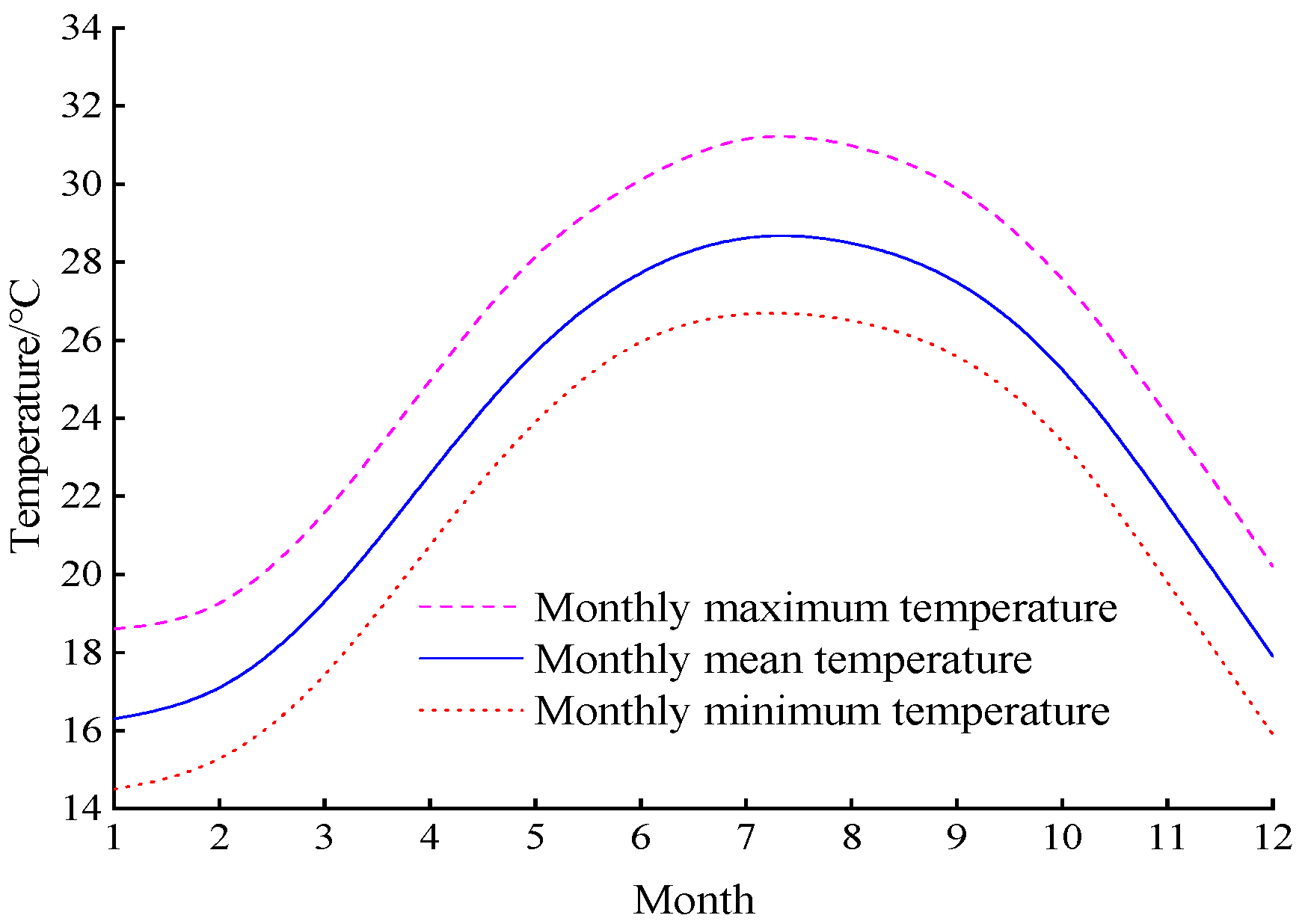

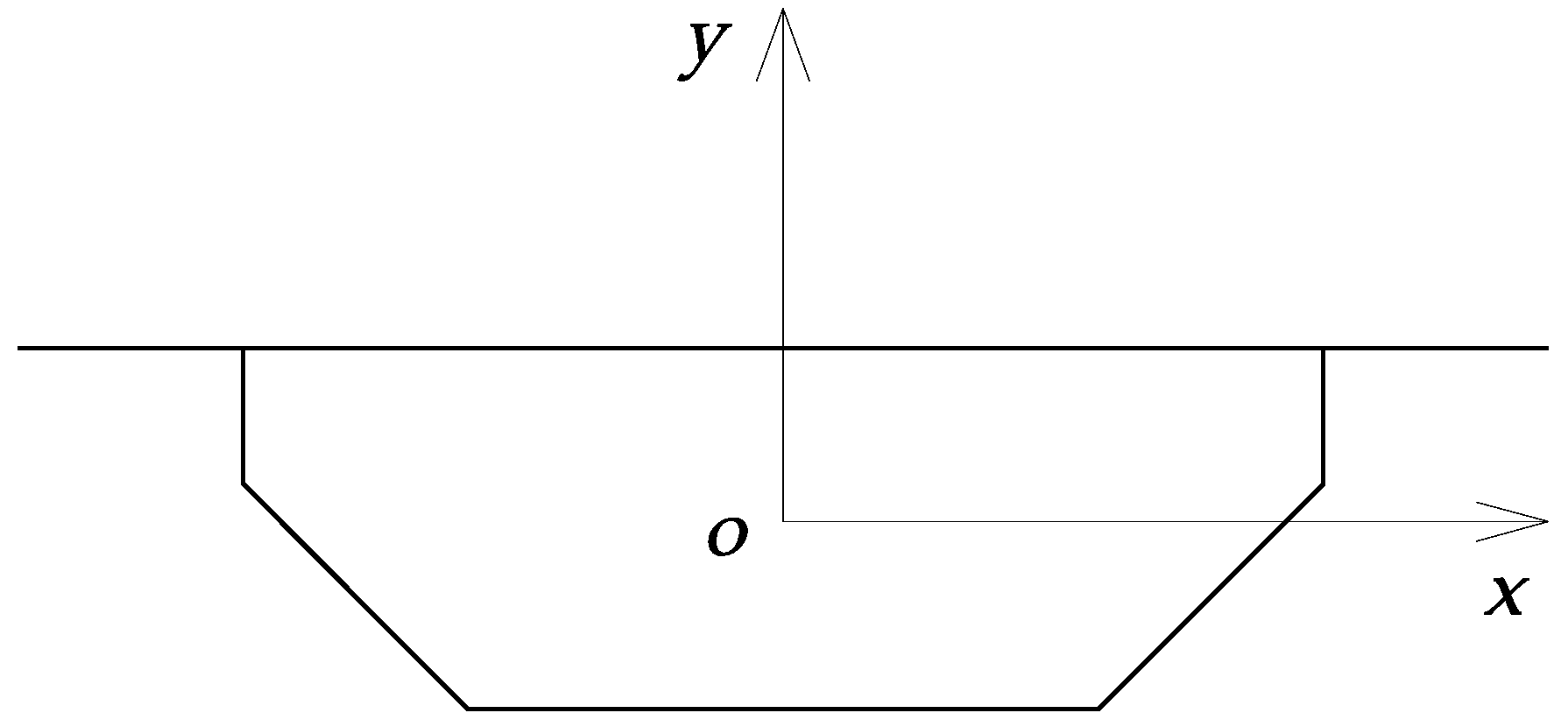
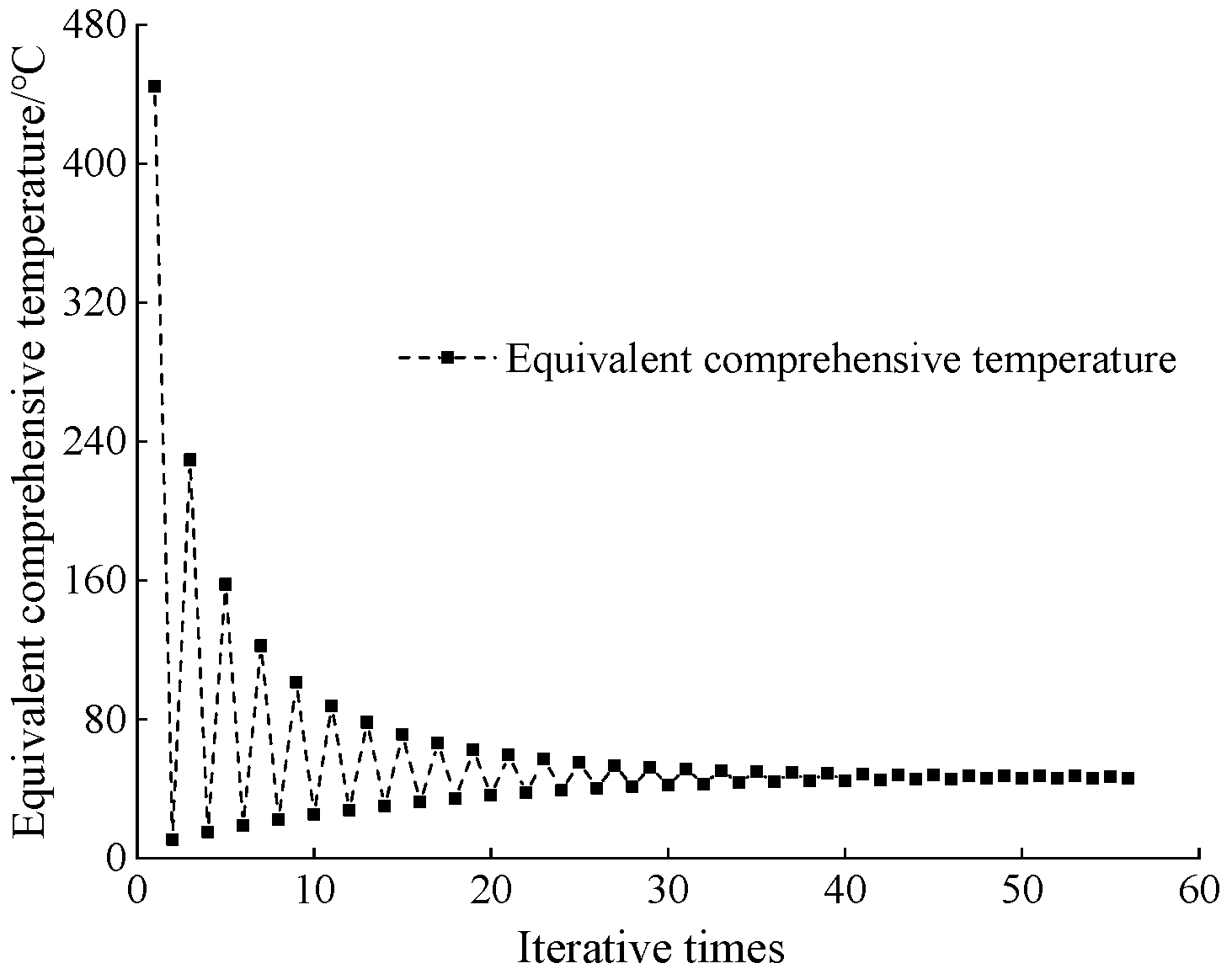
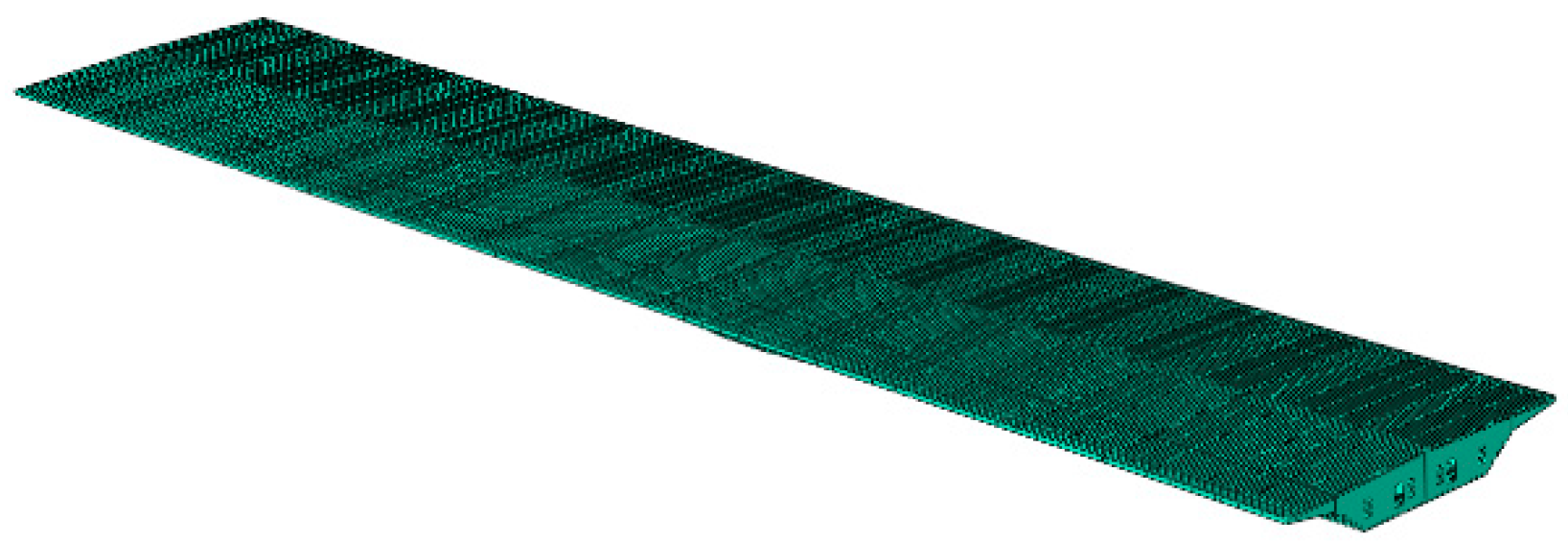

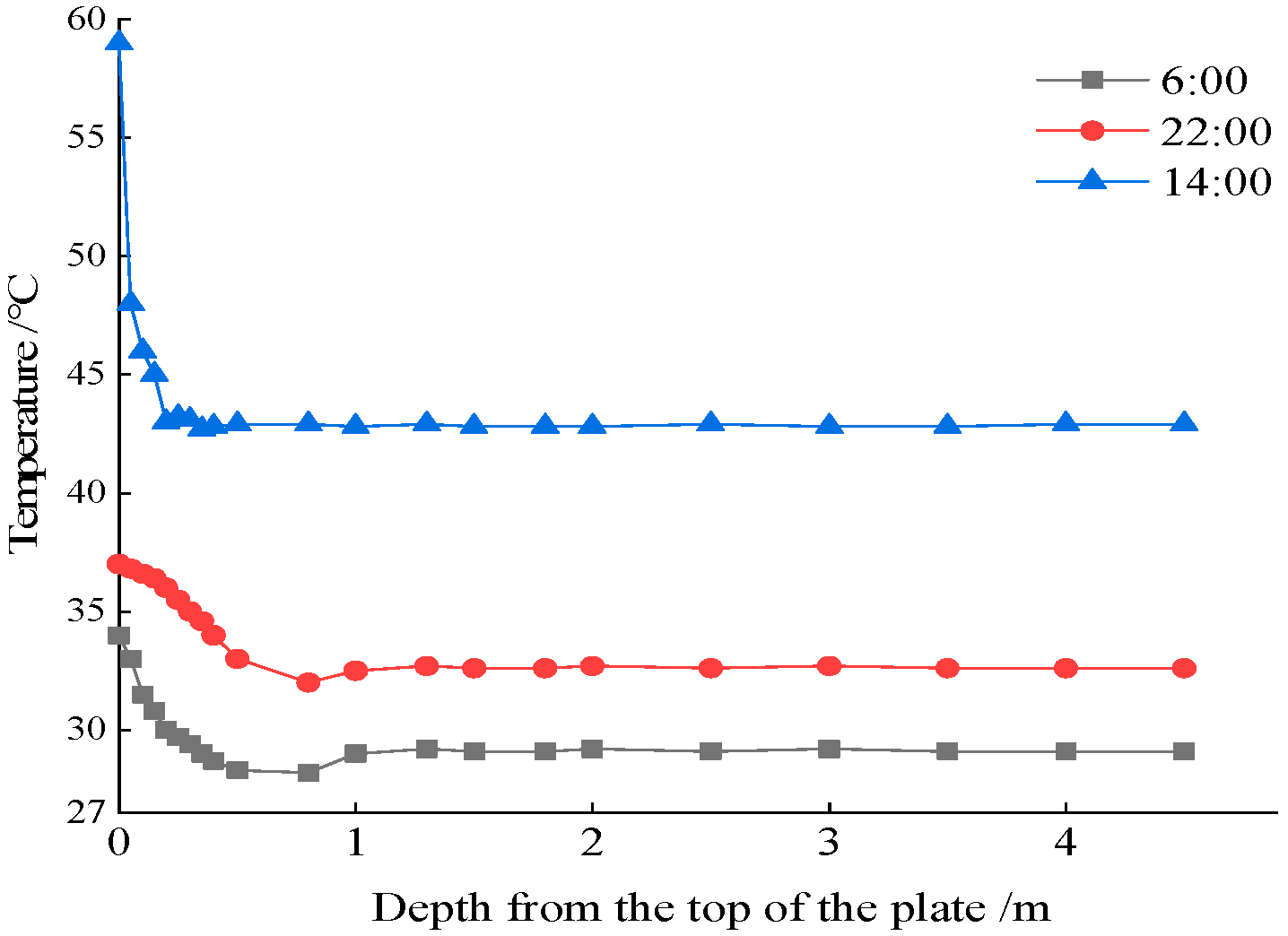
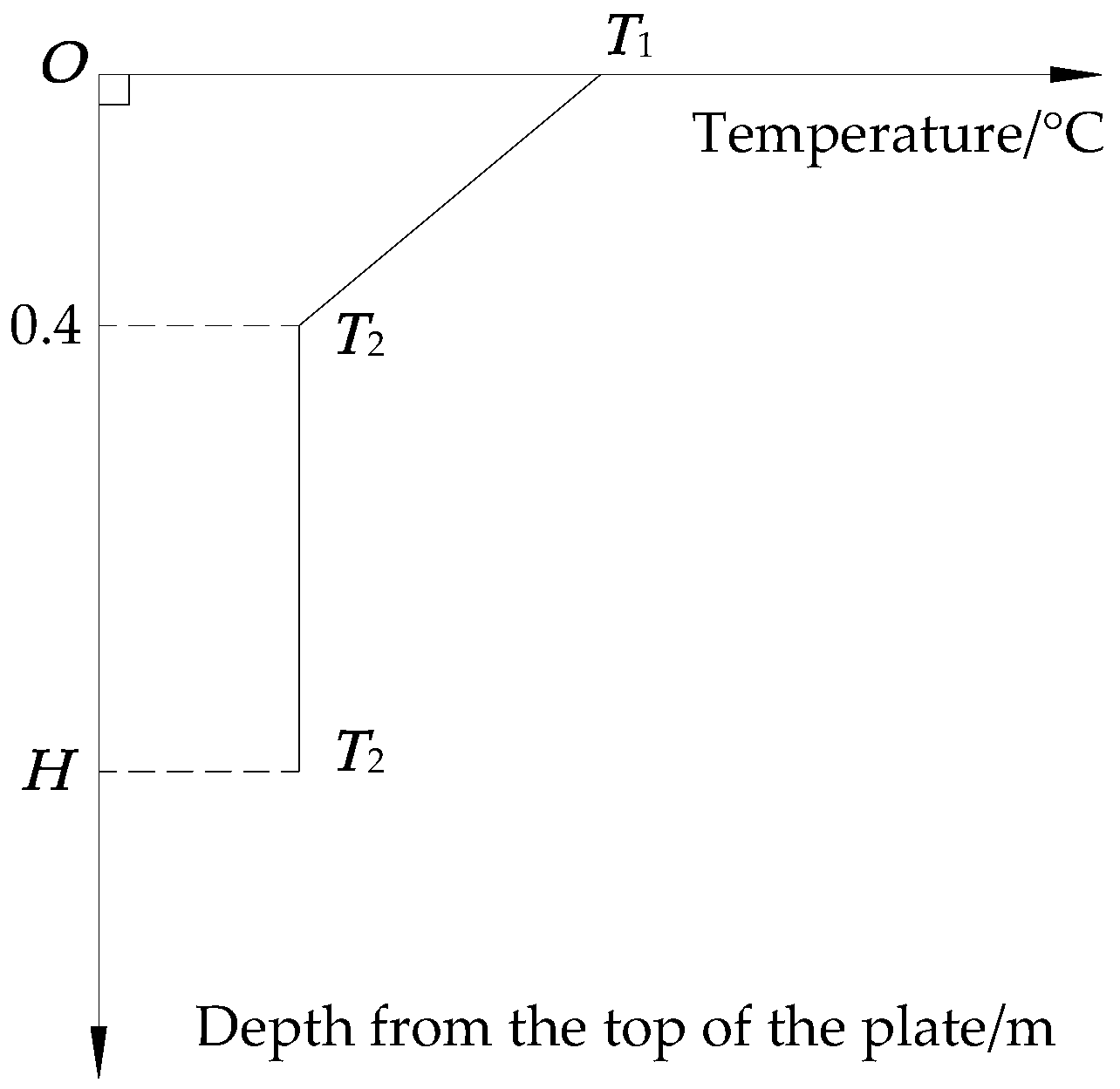
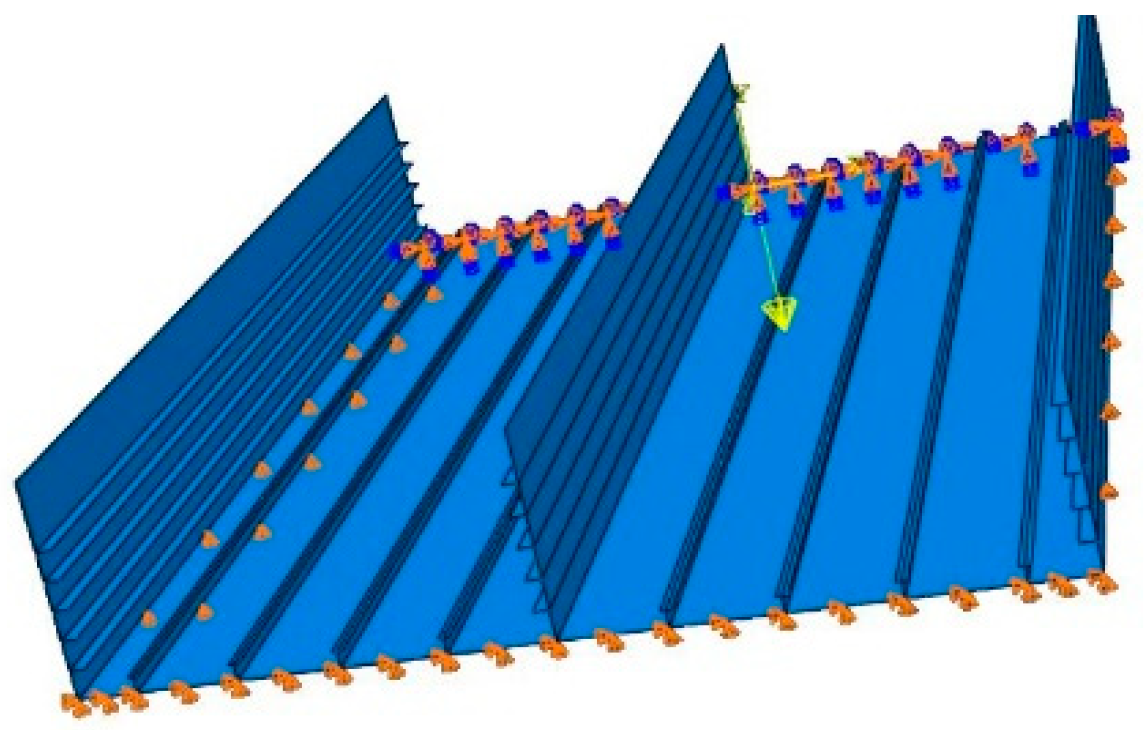



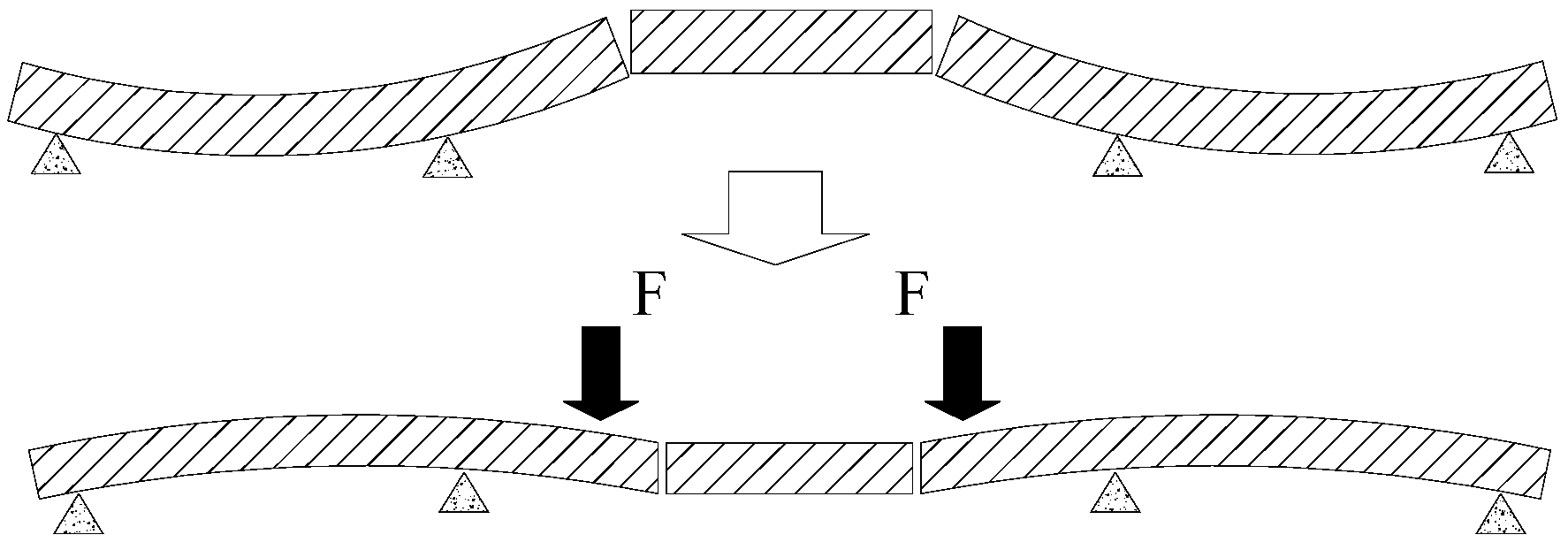
| Time | 06:00 | 07:00 | 08:00 | 09:00 | 10:00 | 11:00 | 12:00 |
| T | 26.4 | 182.1 | 284.1 | 397.3 | 476.8 | 537.5 | 569.2 |
| W/B | 0 | 23.9 | 40.2 | 57.3 | 81.2 | 106.3 | 113.2 |
| Time | 13:00 | 14:00 | 15:00 | 16:00 | 17:00 | 18:00 | |
| T | 521.6 | 435.8 | 328.6 | 215.8 | 126.8 | 14.5 | |
| W/B | 104.1 | 78.2 | 46.4 | 27.6 | 15.7 | 0 | |
| Time | 06:00 | 07:00 | 08:00 | 09:00 | 10:00 | 11:00 | 12:00 |
| 28.5 | 31.3 | 32.4 | 33.5 | 35.2 | 37.6 | 39.4 | |
| Time | 13:00 | 14:00 | 15:00 | 16:00 | 17:00 | 18:00 | 19:00 |
| 40.3 | 43.7 | 42.1 | 41.5 | 40.3 | 38.4 | 36.5 | |
| Time | 20:00 | 21:00 | 22:00 | 23:00 | 24:00 | ||
| 33.8 | 32.5 | 31.4 | 30.7 | 29.6 | |||
| Time | 00:00 | 01:00 | 02:00 | 03:00 | 04:00 | 05:00 | 06:00 |
| 28.1 | 27.6 | 27.2 | 26.8 | 26.6 | 26.5 | 26.4 | |
| Time | 07:00 | 08:00 | 09:00 | 10:00 | 11:00 | 12:00 | 13:00 |
| 28.9 | 29.9 | 31.0 | 32.1 | 33.2 | 34.3 | 35.3 | |
| Time | 14:00 | 15:00 | 16:00 | 17:00 | 18:00 | 19:00 | 20:00 |
| 37.8 | 37.6 | 37.2 | 36.4 | 35.5 | 34.3 | 33.0 | |
| Time | 21:00 | 22:00 | 23:00 | 24:00 | |||
| 31.7 | 30.3 | 29.1 | 28.1 | ||||
| Parameters | Density (kg·m−3) | Specific Heat Capacity [J·(kg·°C)−1] | Thermal Conductivity [W·(m·°C)−1] | Absorptivity | Irradiance |
|---|---|---|---|---|---|
| air | 1.293 | 1.000 | 1.000 | — | — |
| steel | 7854 | 434 | 60 | 0.55 | 0.60 |
| Parameters | Elastic modulus (GPa) | Poisson’s modulus | |||
| air | — | — | |||
| steel | 2.06 | 0.25 |
| Parameters | Yield Strength (MPa) | Tensile Strength (MPa) | Elongation (%) |
|---|---|---|---|
| steel | 345 | 490 | 20 |
Disclaimer/Publisher’s Note: The statements, opinions and data contained in all publications are solely those of the individual author(s) and contributor(s) and not of MDPI and/or the editor(s). MDPI and/or the editor(s) disclaim responsibility for any injury to people or property resulting from any ideas, methods, instructions or products referred to in the content. |
© 2023 by the authors. Licensee MDPI, Basel, Switzerland. This article is an open access article distributed under the terms and conditions of the Creative Commons Attribution (CC BY) license (https://creativecommons.org/licenses/by/4.0/).
Share and Cite
Luo, Z.; Li, Y.; Wang, J.; Dong, F. Refined Analysis of the Transient Temperature Effect during the Closing Process of a Cross-Sea Bridge. Sustainability 2023, 15, 12970. https://doi.org/10.3390/su151712970
Luo Z, Li Y, Wang J, Dong F. Refined Analysis of the Transient Temperature Effect during the Closing Process of a Cross-Sea Bridge. Sustainability. 2023; 15(17):12970. https://doi.org/10.3390/su151712970
Chicago/Turabian StyleLuo, Zuolong, Yuan Li, Jiaqing Wang, and Fenghui Dong. 2023. "Refined Analysis of the Transient Temperature Effect during the Closing Process of a Cross-Sea Bridge" Sustainability 15, no. 17: 12970. https://doi.org/10.3390/su151712970
APA StyleLuo, Z., Li, Y., Wang, J., & Dong, F. (2023). Refined Analysis of the Transient Temperature Effect during the Closing Process of a Cross-Sea Bridge. Sustainability, 15(17), 12970. https://doi.org/10.3390/su151712970






